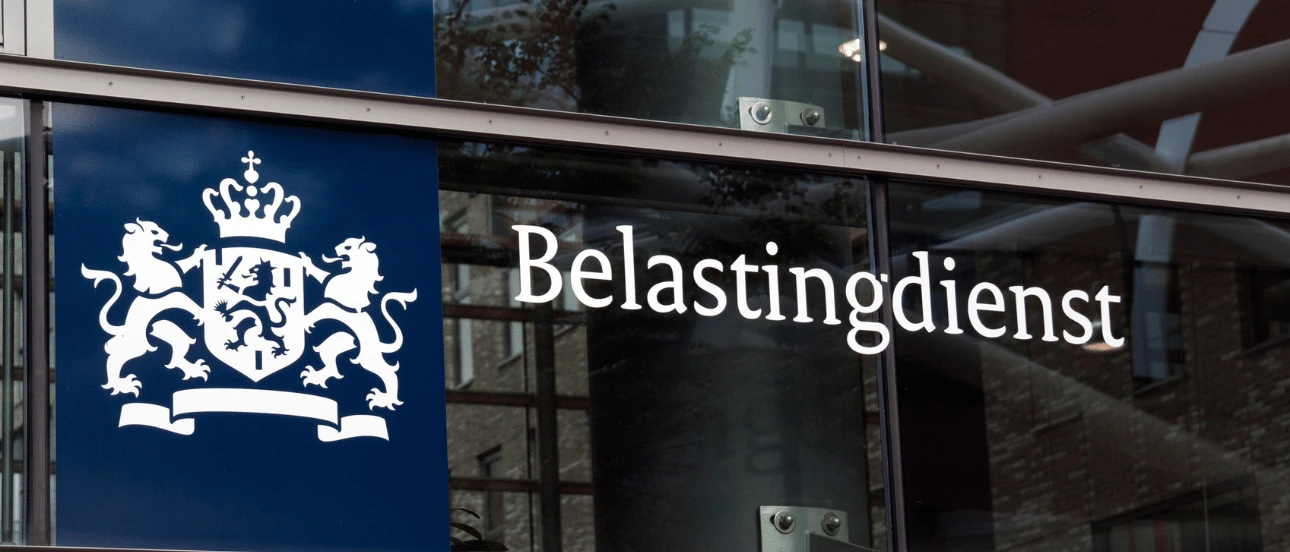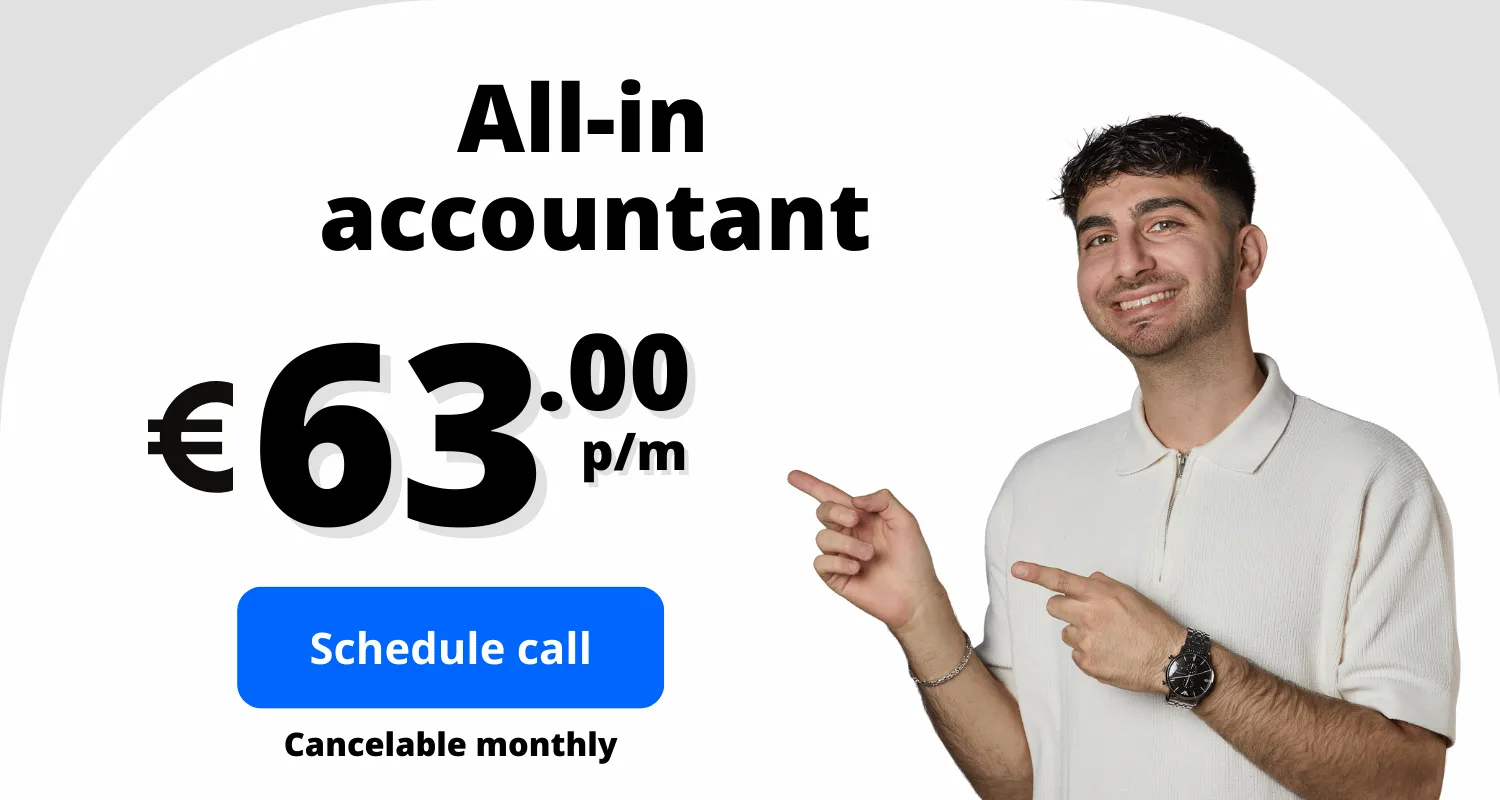What is VAT declaration?
Every businessman is obliged to pay VAT (sales tax) on the added value of products or services. This is done via the VAT return. In this return, you indicate how much VAT has been settled and remitted on business expenses and investments. The difference determines whether you, as an entrepreneur, have to pay VAT or get a refund. In most cases, you submit the return on a quarterly basis. A monthly or annual return is also an option.
Difference between VAT and sales tax
The terms 'VAT' and 'sales tax' have the same meaning. In practice, you see that these terms are often used interchangeably. Official documents often refer to sales tax, when it is more simply called VAT.
VAT rates
Three VAT rates apply in the Netherlands. Which rate you use depends on the products or services you supply. There are also situations where you do not charge VAT at all, because a service is exempt from VAT. Below is an overview of the rates and exemptions.
21% (standard rate)
The standard rate of 21% applies to the vast majority of all goods and services in the Netherlands. These include electronics, software, clothing, business services and most other products and services. This is the rate you will use as an entrepreneur in most cases.
9% (reduced rate)
The reduced VAT rate of 9% applies to products and services that the government wants to keep affordable for consumers. These include food, books, newspapers, medicines, hairdressing services and bicycle and shoe repairs. The purpose of this lower rate is to make these essential or cultural products more accessible.
0% (zero rate)
You mainly use the zero rate in situations where the VAT is transferred to an entrepreneur in another country. This applies, for example, to exports to countries outside the EU or to certain deliveries within the EU. You charge 0% VAT in these cases, but do retain the right to deduct input VAT, an important difference from exempted supplies.
Exempt from VAT
For certain sectors, a VAT exemption. This happens in healthcare, education and certain financial services. In these cases, you do not have to charge VAT to customers. But at the same time, as an entrepreneur, you are also not entitled to deduct VAT on business expenses and investments.
Special VAT rules
Additional VAT rules apply in some situations. These special regulations do not determine which rate you use, but how you should process VAT in your administration and invoicing. Below are the main special regulations for entrepreneurs.
VAT transferred
At the 'reverse charge mechanism' shifts the obligation to remit VAT from the supplier to the customer. So that means that you do not pay VAT yourself, but the customer does so in his or her VAT return. This arrangement is often used in the construction industry, the lending of personnel and in international trade.
On the invoice, clearly state 'reverse charge VAT' along with the customer's VAT number.
The small business scheme (KOR)
If your annual turnover remains below €20,000 then you can opt for the KOR (small entrepreneurs scheme). In that case, you do not have to charge VAT. You will also then not have to file a VAT return and makes administration easier. But beware. You are also not allowed to deduct VAT on business expenses in this case. This scheme applies for a maximum of three years. It expires when you exceed the €20,000 limit.
VAT return: when to do it in 2025?
Most business owners file quarterly returns. For 2025, by quarter, these are the deadlines for declaration and payment.
Period (quarter) | Deadline for declaration and payment |
1st quarter 2025 (Jan-March) | 30 April 2025 |
Q2 2025 (Apr-Jun) | 31 July 2025 |
3rd quarter 2025 (Jul-Sep) | 31 October 2025 |
4th quarter 2025 (Oct-Dec) | 31 January 2026 |
Both the declaration and payment must be in by the deadline. Take into account a processing time for transfers. You can read more about this under VAT declaration.
Doing monthly or annual VAT returns?
Actually, the Inland Revenue determines how often and when you have to file VAT returns. This is often once a quarter. Do you structurally pay more than €15,000 per quarter? Then the tax authorities may oblige you to file a monthly VAT return. Filing a VAT return once a year is possible if you do not pay much VAT (less than €1883 per year). When you register, the tax authorities determine how often per year you pay VAT. Nevertheless, you can also request a change yourself.
How to file VAT returns as a self-employed person?
You file your VAT return via the entrepreneur portal of the Tax and Customs Administration. To do this, self-employed people log in with DigiD. Careful preparation is important. Make sure your invoices, receipts and records are complete and correct for the relevant period. The following steps give you an overview of how best to go about this:
- Go to My Tax Business and log in.
- Select the appropriate time period.
- Enter the turnover, the correct VAT rate and how much VAT you have charged.
- Then give how much VAT you paid on business expenses (input tax).
- Then check your own details and file the return.
- Finally, you pay the amount due via iDEAL or manual transfer.
And have you not made any turnover? Then you still have to file a zero declaration. This avoids penalties.
Preload
You can deduct the VAT you pay on business expenses from the VAT you charge your customers. We officially call this preload. This deduction is only allowed for business expenses and when you generate VAT-regulated turnover yourself. VAT on private expenses or expenses related to exempt turnover are not subject to input tax.
Tips for VAT returns
The following practical tips will help you avoid mistakes and stress around your VAT return.
- Note the return deadlines in your diary or use the Inland Revenue's VAT Alert app.
- Put the VAT received in a separate account, that way you won't face any surprises.
- Make sure your records are in order and keep all records for at least seven years.
- Consider using accounting software or engage an accountant if you find tax returns too complex.
Error in your VAT return
Of course, it can happen that you make a mistake in your VAT return. Perhaps you overlooked an invoice or simply entered an incorrect amount. It is then important that you correct this mistake as soon as possible. Depending on the size of the difference, there are two ways you can correct it. For example, via a correction in your next return or via a separate supplementary statement.
A small correction (up to €1000)
Smaller errors under €1000 you may correct in the next declaration. So you do that, for example, if you have declared €500 too much or too little.
Supplements (above €1000)
For larger differences (above €1000), you need a filing a supplementary declaration. You do this easily via the Tax and Customs Administration portal. In it, you state the period you are correcting and then fill in the correct details. After submission, you will receive a refund or an additional tax assessment. A voluntary correction usually does not result in a fine.
VAT return late or forgotten?
Late VAT returns or payments can have unpleasant consequences. Here are the possible penalties:
- A post-tax assessment based on an estimated VAT amount
- Penalty for late declaration (€82 each time)
- Penalty for late payment (3% of the amount, with a minimum of €50)
- Calculation of recovery interest
- Loss of administrative reliability of your business
In that case, submit your tax return as soon as possible and pay immediately. If you disagree with the fine or assessment, you can object within six weeks.
Frequently Asked Questions
When do you file your VAT return as a self-employed person?
By default, you file a quarterly VAT return as a self-employed person. Unless your turnover is such that it gives rise to monthly or annual returns.
When do I have to pay sales tax?
You pay VAT (sales tax) along with your tax return. For quarterly returns, these are the dates 31 January, 30 April, 31 July and 31 October.
Is VAT the same as sales tax?
Yes, VAT is exactly the same as sales tax.
What percentage of sales tax do you pay?
Usually, you pay 21% VAT. In some cases, it is 9% (on books or food, for example). And sometimes you even pay 0% as on exports. Some services, such as in healthcare, are completely exempt from VAT.






